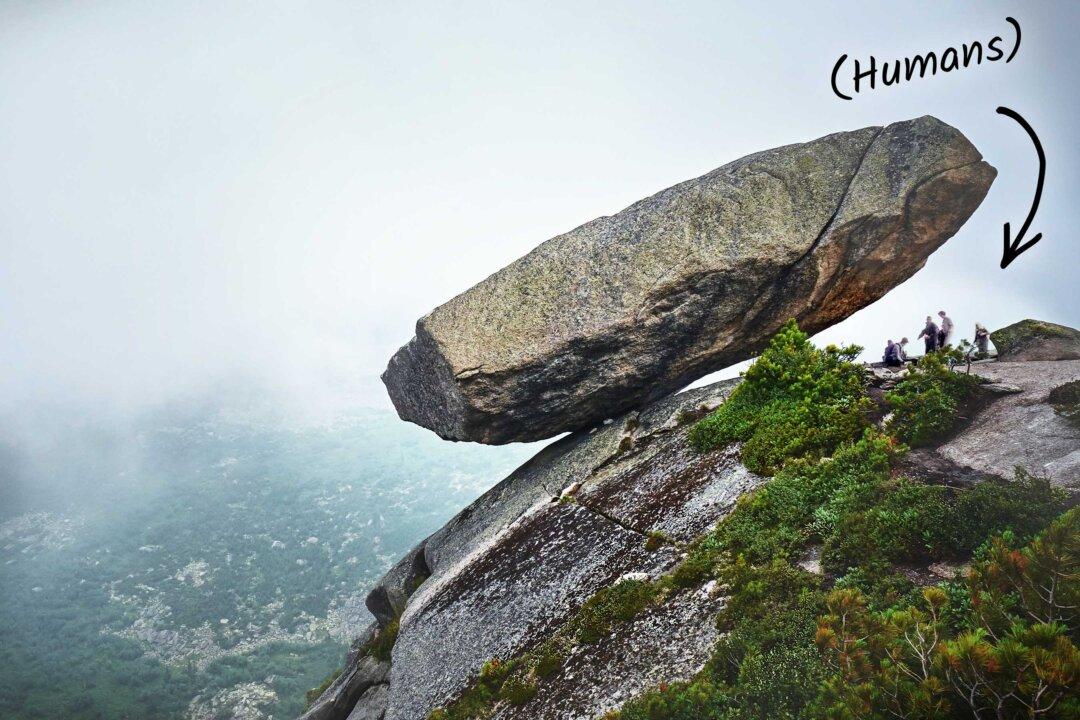The humungous Hanging Rock looks like it could topple at any moment. Perched precariously on a cliff face, this 50-foot-long, 500-ton granite stone is one of Russia’s natural wonders, lying hidden in a remote mountain range in southern Siberia.
The ginormous rock holds on for dear life, resting upon a surface area of just 1 square yard. Located in Ergaki National Park, the giant stone appears to “hang” in mid-air about a half-mile over the deep waters of Lake Raduzhnoye, also known as Rainbow Lake.






